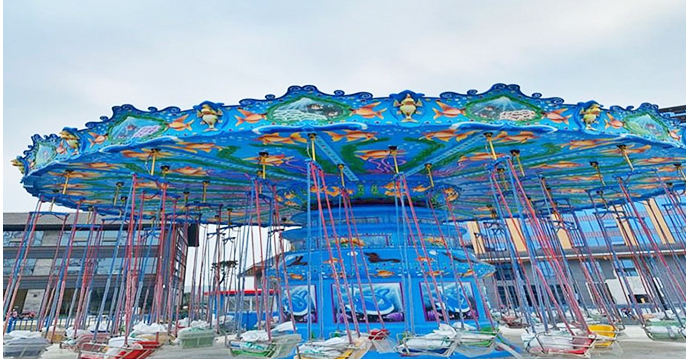Exploring the Thrilling Design and Engineering Behind Roller Coaster Tracks and Their Unique Features
The Thrill of Roller Coaster Tracks Engineering Marvels of Fun
Roller coasters have long captivated the imagination of thrill-seekers around the world. These towering structures of steel and wood, with their intricate tracks winding through the air, offer an exhilarating blend of speed, height, and gravity-defying twists. The design and engineering of roller coaster tracks have evolved significantly over the years, transforming simple rides into complex attractions that challenge the boundaries of physics and human courage.
At their core, roller coasters are based on fundamental principles of physics gravity, acceleration, and centripetal force. The journey begins as riders ascend steep hills where they experience a surge of anticipation. The first drop, a moment that defines the thrill of the ride, unleashes a rush of adrenaline as the coaster plummets downward, accelerating rapidly. This initial descent is often the highest point of the ride, setting the stage for what comes next—loops, corkscrews, and spirals that twist riders in various orientations.
The design of the roller coaster track itself plays a pivotal role in shaping the experience. Engineers carefully calculate each curve and angle to ensure not only safety but also the optimal thrill factor. The transition from a straight track to a curve requires precise understanding of the forces at play; too sharp a turn can lead to discomfort, whereas a gentle curve may not provide enough excitement. To this end, many modern coasters employ computer-aided design (CAD) to simulate how riders will experience the ride, allowing designers to tweak elements before construction begins.
roller coaster track

In the realm of roller coasters, two main types of tracks are prominent steel and wooden. Steel coasters, often revered for their smoothness and ability to create complex inversions, dominate many amusement parks. Their tracks are typically about 12 to 15 inches wide, offering a sleek and streamlined ride experience. Conversely, wooden coasters are known for their nostalgic feel and traditional craftsmanship. The wooden track’s natural flexing provides a unique sensation, making each ride a distinctive adventure. Both types have staunch advocates, highlighting the rich diversity in coaster design.
Internationally renowned roller coasters, such as the Steel Vengeance at Cedar Point or Fury 325 at Carowinds, showcase the incredible innovation found in this field. These rides push the limits of height and speed, often breaking records and re-invigorating the quest for thrills. The relentless pursuit of the tallest, fastest, and longest has spurred engineers to explore new materials and technologies. For instance, magnetic launch systems allow coasters to achieve remarkable speeds without the need for a traditional lift hill, delivering a new form of exhilaration.
Moreover, the immersive theming surrounding roller coasters enhances the overall experience. Parks often envelop rides in stories and elaborate designs—think of the dark tunnels and cascading waterfalls of Harry Potter and the Escape from Gringotts or the eerie ambiance of The Twilight Zone Tower of Terror. These narratives, combined with the physical sensations of the ride, create a multi-sensory experience that lingers long after the ride has ended.
In conclusion, roller coaster tracks are not merely routes for passengers; they are intricate constructs of engineering that embody hands-on art and science. The thrill of riding them goes far beyond the speed and height; it's the embodiment of human creativity and a testament to our desire for adventure. As technology evolves, it’s exciting to imagine the future of roller coasters, where even more innovative designs and experiences await, ensuring that the legacy of thrill ride engineering continues to soar.
-
Top Amusement Equipment Manufacturer Rock n Roller Coaster & Carousel ManufacturerJun.10,2025
-
World's Scariest Roller Coaster Experience Ultimate Thrill & HeightJun.10,2025
-
Ultimate Thrill Ride Roller Coaster High-Speed, Safe AdventureMay.30,2025
-
Carousel Mansfield Rides Premium Indoor & Event SolutionsMay.30,2025
-
T3 Roller Coaster High-Thrill, Safe Ride for Theme Parks & ResortsMay.30,2025
-
Roller Coaster Cart Design Custom-Built & High-Safety Thrill Ride VehiclesMay.30,2025
